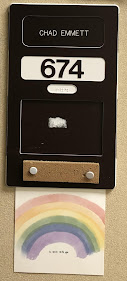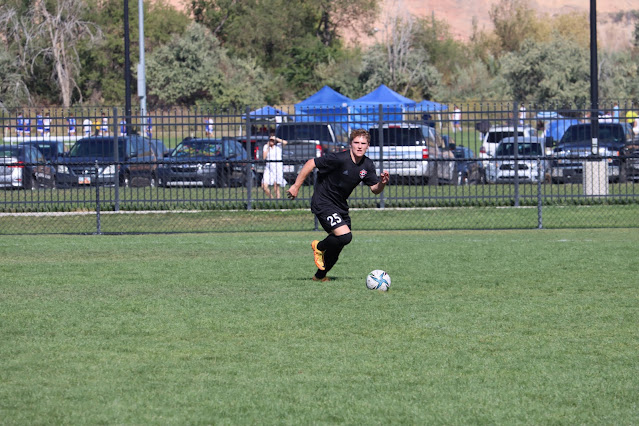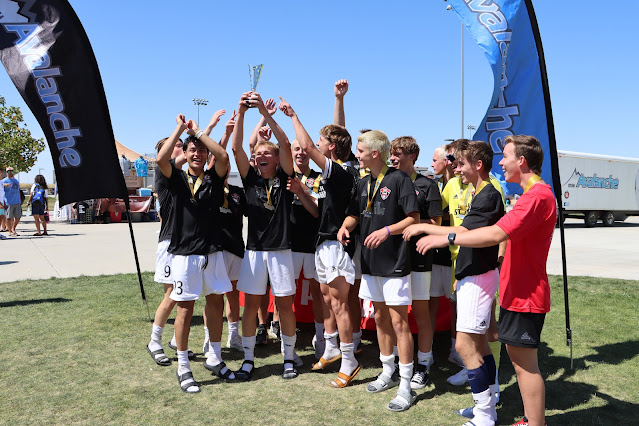While many people rejoice at coming to the end of a career, this retirement was a bitter-sweet move. I didn't just retire from work, but, as in the more archaic meaning of the term, I also felt compelled to withdraw to a place of safety--mental and emotional safety. Throughout my career I have researched and published on a broader variety of topics than the ordinary, more focused scholar. This was the direct result of global terror and BYU's ultra-cautious and very restrictive travel policies which forced this regional geographer to shift from doing the Middle East (no thanks 9/11), to Southeast Asia (no thanks Bali and Marriott bombings), to security and safety of women, and then back to Indonesia.
Looking back on my research and publishing endeavors, the only common thing (certainly not a specific region or focus as initially planned) is that most of what I have done has been centered on underdogs, the marginalized, the victim, those in peril, and those seeking peace. I have tried to champion their cause.
Much of my early work (and some later) focused on peacefully sharing land and sacred space in religiously plural places. Most often I focused on the stateless Palestinians and waning Christians in the Islamic world. My dissertation and subsequent book Beyond the Basilica: Christians and Muslims in Nazareth (University of Chicago Press), looked at how two religious groups bound together by Arab culture and their minority status in Israel coexisted for centuries only to be fractured beginning in 1989 with the re-emergence of an Islamic-based political party. In 'The Status Quo Solution for Jerusalem" Journal of Palestine
Studies, I proposed that the century and a half long truce in The Church of the Holy Sepulcher between rival Christain factions could be used as a model for a way in which both Israelis and the beleaguered Palestinians could share Jerusalem as a capital for their two states. "The Capital Cities of Jerusalem," in The Geographical Review, also proposes that Jerusalem be a fairly shared capital that can then be equally enjoyed by all who live there. “Jerusalem’s Role as a Holy City for Muslims,” published in a special edition of BYU Studies about Islam, makes the case that Muslim attachment to the Holy City is equally valid thus necessitating that there be parity of Jewish, Christain and Muslim influence and presence in the city.
In both "Sharing Sacred Space in the Holy Land." (in Cultural Encounters with the Environment: Enduring and Evolving Geographic Themes.) and “Contesting
Religious Heritage in the MENA Region.” co-authored with Daniel Olsen (in Cultural and Heritage Tourism in the Middle
East and North Africa), I helped describe and analyze how religious communities do and do not share sacred places. Later in “The Siting of Churches and Mosques as an Indicator of Christian-Muslim Relations.” Journal of Islam and Christian-Muslim Relations, I used research in both the Middle East and Indonesia to analyze how the locating of places of worship--church and mosque--could help to better understand how Christians and Muslims have contended and coexisted through the centuries.



When the Middle East was shut down to BYU scholars, I decided to shift my focus on Christian-Muslim relations from the Middle East to Indonesia. I set out to tell via hundreds of interviews, journals, letters and documents how a tiny Christian sect (The Church of Jesus Christ of Latter-day Saints) was able to slowly establish itself in the largest Muslim country in the world--not an easy endeavor that spans 52 years of opposition, setbacks and restrictions. The book is still a work in progress with hundreds of pages written and still a few more to go (Listen to a lecture from early research here: Taking Root lecture). Along the way I published a book chapter about how pious merchants---Hindu, Buddhist, Muslim, Christian and Mormon helped to slowly spread their faiths throughout the archipelago ("Pious Merchants as Missionaries and the Diffusion
of Religions in Indonesia" in The Changing World Religion Map: Sacred Places, Identities, Practices
and Politics). I also was invited to write “Tantangan yang dihadapi oleh Gereja Yesus
Kristus dari Orang-Orang Suci Zaman Akhir di Indonesia” (Challenges facing The
Church of Jesus Christ of Latter-day Saints in Indonesia), Maarif which highlights some of the challenges and even successes (fostered by Church humanitarian aid) of the Church in Indonesia. When Indonesia shut down, my friend and colleague Valerie Hudson invited me to join her at the beginning stage of what became the WomanStats Project. Over many years and with the help of many wonderful student coders we compiled the largest data base in the world dealing with the status of women around the world https://www.womanstats.org/. With that data we created scales and maps showing how secure women were in their various countries. Also scaled and mapped were topics related to such varied topics as maternal mortality, life expectancy, domestic violence, rape, FGM, child marriage, education, trafficking, political participation, and inheritance. Eventually our research was published in several journal articles and then in the Emma Watson and Gloria Steinem praised book Sex and World Peace (don't judge, the publishers said sex sells). The main thesis of the book is that the "very best predictor of a state's peacefulness is not its level of wealth, its level of democracy, or its ethno-religious identity; the best predictor of a state's peacefulness is how well its women are treated." The WomanStats Project has launched and supported via its data many projects that call for increased efforts to improve the status of women and girls in every country of the world.



In my final few years at BYU, much of my work was focused on an interdisciplinary and inter -university study funded by Geoscientists Without Borders that focused on better understanding the vulnerability of seismically challenged Indonesia to tsunamis. See for example: "Perceptions of tsunami
susceptibility and self-efficacy among adolescents in Indonesia: The influence
of gender, religion, location, age, hazard information source, and past
experience", (multiple authors) International Journal of Disaster Risk Reduction. Part of our research included outreach (my main focus) to schools, civic leaders and villagers. We taught children in dozens of schools on four islands that if they feel the earth quake for more than 20 seconds then there is a significant chance that a tsunami may strike. That means they have 20 minutes to get to an elevation of 20 meters (fourth story or up a hill side). I'll always remember leading an evacuation drill of several hundred junior high students, with all of the girls in white jilbabs, out the back yard of their vulnerable seaside school and up the hill side to a safe elevation. Our 20/20/20 efforts have since been adopted by Indonesia's Disaster Mitigation Agency as part of its tsunami awareness curriculum. Who knows, one day some of those school children may survive a tsunami because of our team's efforts.
My interest in and desire to help the marginalized, underdogs and victims also extended to advocacy at BYU. While serving as Coordinator of the International Studies program I went to bat for a large and well-organized group of students wanting BYU to create a development major when a development emphasis within IS was discontinued when the new econ and poly sci heavy IR program was created. The hard work of the students along with advocacy from me and other faculty was not successful.
While serving as advisor to the Muslim Student Association, the Muslim students on campus decided to hold a Muslim-Mormon break-the-fast potluck dinner on a fast Sunday evening during the fasting month of Ramadan. The wonderful idea was to build bridges between Mormons and Muslims both of whom believe in fasting. I was tasked with reserving a room for the event in the Wilkinson Student Center only to find out that there are rules that only allow LDS wards and stakes to reserve rooms in the WSC on Sundays. I lobbied up through three levels of student life administrators, ending with the VP of Student Life. Even after explaining about the event, with its admirable objective, and how the Muslim students (and other non-LDS religious clubs) had no other place to gather, the VP denied our request. With only two days to find a place, the students were able to arrange to meet in the foreign language housing commons area. That Monday I wrote the VP a respectful (well sort of) letter explaining how the deeply hurt Muslim students deserved an apology and then I quoted Elder Neal A Maxwell.
“Rules are useful, but these must merely mark where the borders of conscience end. Rules have a way of pushing conscience back, and yet further back. Besides, each human and each human situation are sufficiently different that rules thus multiplied become like the unpruned tree. A lively conscience can cut through to the justice of any situation” (Of One Heart p. 24).
That letter I later learned won me the moniker of "loose cannon" from the VP. At least that is how my dean told me she referred to me.
In my three-year service on the Faculty Advisory Committe, I served on the teaching committee. One of the items we came up with was a proposal to add some sort of spring break to the academic calendar so that in the long haul from Presidents Day to finals, students had some sort of mental health break. Surprisingly our proposal was accepted in a truncated form--one Friday off in mid-March. Somedays you have to take what you can get.
During the 2009-10 academic year I taught three semesters of Old and New Testament classes at the BYU Jerusalem Center. A delightful duty. During that year our family got to be good friends with the few Arab LDS families in the tiny Bethlehem group. We were even invited to a wonderful Christmas Eve gathering in one of their homes (which required special permission and a stretch of the rules). After returning home I learned how new and ongoing JC policies had impacted the livelihood (banned from selling souvenir baby blankets to the students) and feeling of inclusion (JC faculty could not visit on Sunday or home teach members in their homes) among the members in Bethlehem. I eventually wrote letters to two administrators explaining the problems and recommending changes. In response to one of the replies explaining the reason for all of the rules, I dug up Elder Maxwell's quote to use again.
After returning I also stood up for a few students who while at the JC had been disciplined for going into the Old City after dark and for sneaking into a hotel for a dip in its pool, only to return to BYU and find they were being doubly punished with an Honor Code warning that then impacted their applications to graduate programs. I wrote letters to the Honor Code office explaining the double punishment and the background for the infractions. Something must have changed for eventually two of the students were able to get admitted into medical school.
A few years later when I was all scheduled to teach a two-week course at the Center on the Israeli-Palestinian conflict to the Jordan Intensive Arabic students, I learned that I was banned from ever teaching at the JC because I "might be disruptive". I guess I ruffled too many feathers. I'm not sad I ruffled, but I was devastated by the ban. Read all about it here: https://beitemmett.blogspot.com/2015/08/banned.html
Most recently I oversaw the creation of a list of resources for students at BYU so that they were more aware of the many options for getting help for sexual assault or discrimination of any kind. see here: https://beitemmett.blogspot.com/2020/08/for-byu-students-in-need-of-help.html. I also served for the past two years on our college's BIPOC committee helping to promote greater inclusion and diversity at BYU.
I have documented the advocacy portion of my academic career at BYU for a purpose. In 2011, I finally admitted to myself that I was gay. It took me a few more years to come out to my family. I have refrained until today from coming out more publicly because I didn't want to draw attention to my new reality, nor did I want to jeopardize my job (for house payment and insurance reasons). The mental trauma of trying to balance being employed at BYU with being gay took its toll. I needed my job (efforts to find a job elsewhere all failed), but to keep my job I felt I had to remain closeted. Sometimes my despair turned to suicidal thoughts. Read more here: https://beitemmett.blogspot.com/2018/12/at-railing.html
Last fall, I finally came to the realization that I needed to be a champion one more time, for myself. This meant I needed to stand up for my own mental health and my own peace. I could no longer endure in what I increasingly felt was a marginalizing, threatening, non-belonging environment. Listen here: https://www.youtube.com/watch?v=CUEBJ3NdaCs or read here: https://www.sltrib.com/religion/2021/08/23/we-must-have-will-stand/. So, I chose to withdraw to a place of safety (retire), two years earlier than planned. I am now happily teaching two adjunct geography classes at UVU, substitute teaching in Nebo School District and this winter I'll also be a lift operator at Deer Valley two days a week (yay for free skiing).
I wish I could have done more to mentor and befriend the many LGBTQ+ students at BYU who took my classes over the years. Many, after graduating, finally dared to "come out". When I found out I would write to them offering my support and telling them they were not alone. I only wish I could have done so when we were all closeted at BYU, hoping for friends, support and understanding, but instead feeling alone, fearful, and without hope. To those students and to all who feel marginalized, I will walk with you, and I hope you will walk with me.
Best wishes to BYU in its new belonging initiative. The gay students, staff and faculty at BYU deserve a more inclusive environment. May there be positive changes to ensure that all who enter truly feel welcome, safe, seen and loved.
Thanks to BYU grad Kayla for this artwork (found on Etsy) that I posted outside my office door last September.


























































